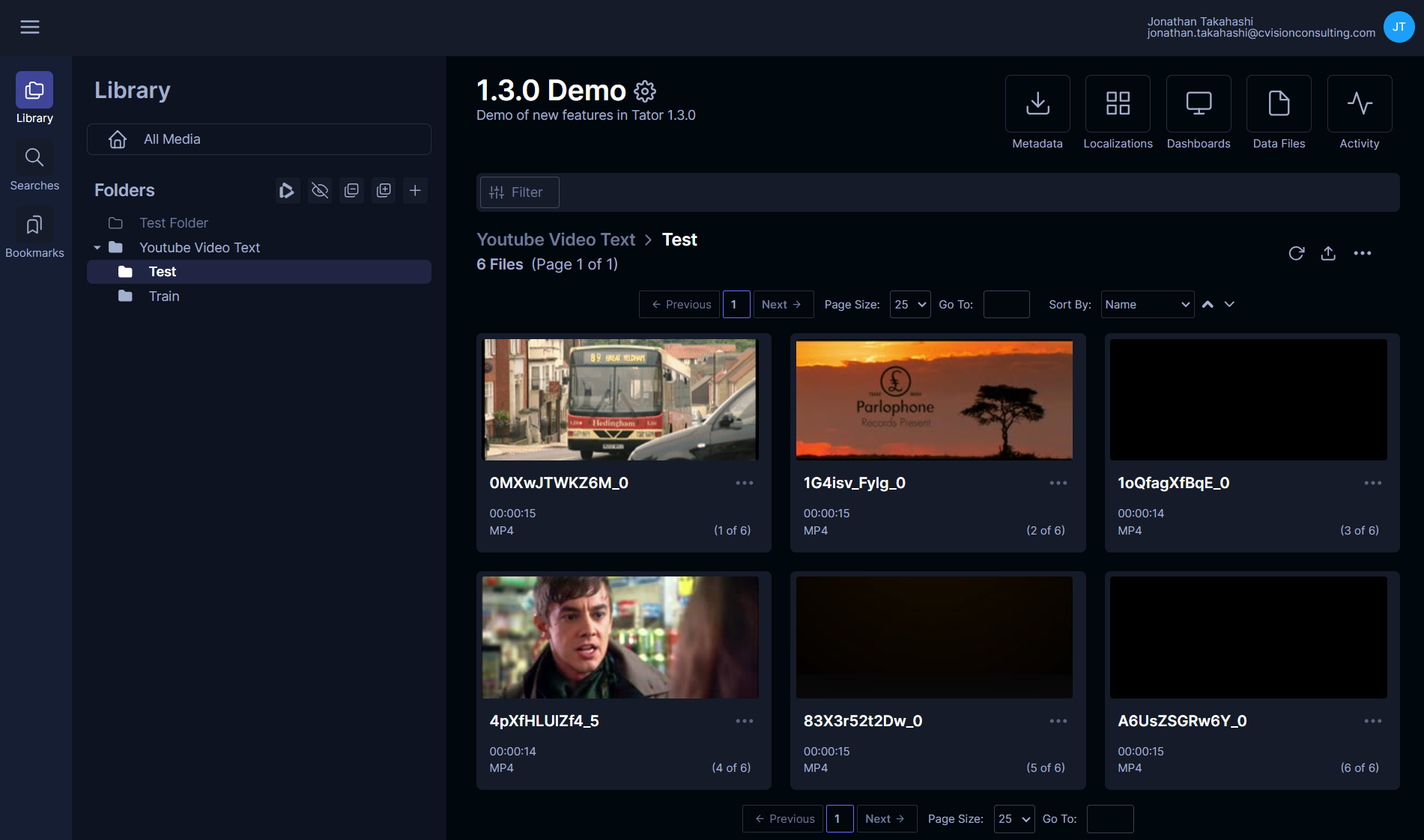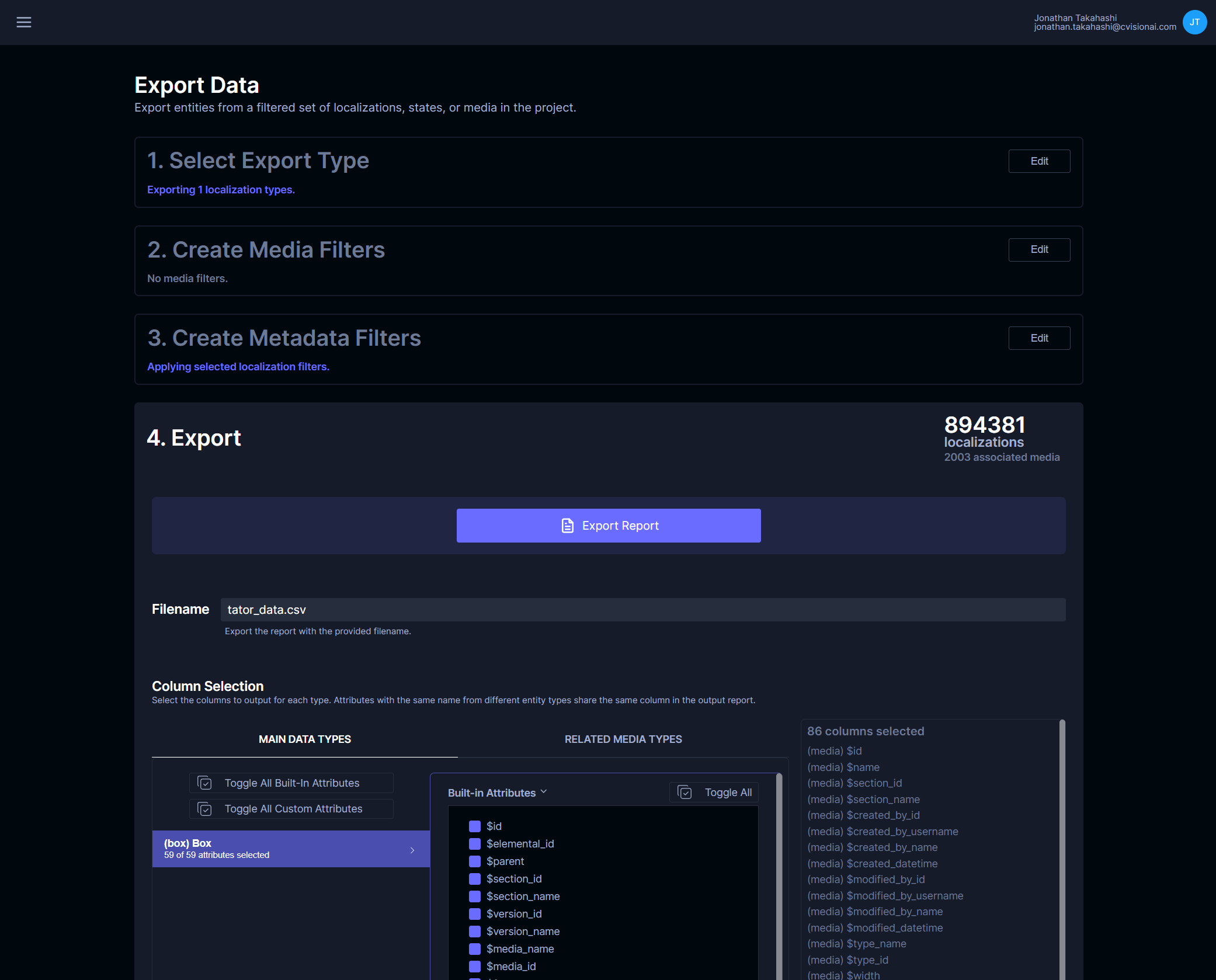Tator 1.3 introduces a range of exciting new features designed to enhance the user experience, along with crucial dependency updates, performance enhancements, and bug fixes. One of the standout features is the nested folders functionality, allowing users to organize their media files in a way that mimics a traditional filesystem. This update also includes a refreshed project detail view.
A new metadata export view offers users granular control over exporting metadata in CSV format, providing greater flexibility and precision. Additionally, the mark-based versioning system lays the groundwork for tracking every change to every piece of metadata in Tator. A user interface for interacting with this historical data is set to be introduced in Tator 1.4.
For applet developers, Tator 1.3 simplifies the deployment and management process with the introduction of hosted templates, making it more convenient than ever to develop and maintain applets.
Nested folders

The new and improved media management experience in Tator centers around the nested folder capability, which allows media to be organized in a hierarchy just like a filesystem. In addition to nested folders, the project detail UX has been revamped for faster access to saved searches, bookmarks, and other major project views that were previously behind the "Analytics" button, including the localization grid view, custom dashboards, and the new metadata export view.
Metadata export view

The metadata export view allows users to export metadata such as localization, states, and media attributes to a CSV file. Users can access the dashboard via the project detail page and select the type of data to export. They can apply filters to the media and metadata before selecting the specific columns for the CSV file. Once filters are set and columns selected, users can export the data, which is then automatically downloaded as a CSV file. For more detailed information, visit the metadata export documentation.
Mark-based versioning
We've introduced a comprehensive versioning system for video and image metadata in Tator. Key features include formalizing definitions of versions, world-wide unique elemental IDs per observation, and revision mark codes. Combined these enable advanced QA/QC workflows or allow users to track edits by multiple users seamlessly via existing REST grammar. API support allows for efficient version management and querying. For detailed information, refer to the full article here.
Hosted templates
Hosted templates in Tator enable the registration of applets that are frequently updated or need project-specific configurations. These templates are registered at the organizational level and can be used in projects by specifying template parameters and headers. Our tutorial explains how to create a hosted template in a private GitHub repository, generate a personal access token for access, register the template in Tator, and use it in applet registrations. Templates can be customized at both the hosted template and applet levels, allowing for flexible parameter overrides.
